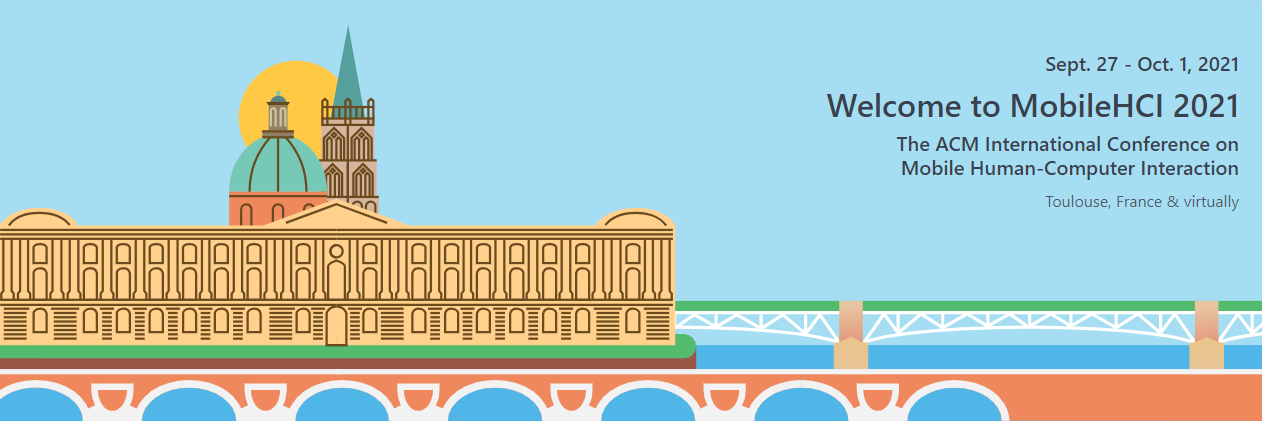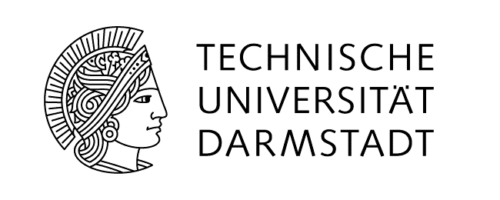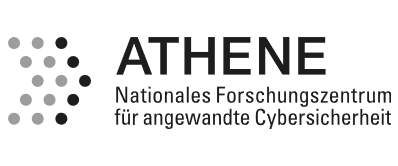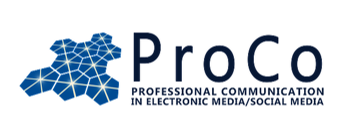
2nd Workshop on Mobile Resilience:
Designing Mobile Interactive Systems for Crisis Response
One-Day Workshop at MobileHCI 2021 on 27th of September 2021.
Organizers: Marc-André Kaufhold, Christian Reuter, Tina Comes, Milad Mirbabaie, Stefan Stieglitz
Programme
The 2nd Workshop on Mobile Resilience: Designing Mobile Interactive Systems for Crisis Response investigates the space of mobile technologies and resilient systems for crisis response, including the application domains of cyber threat and pandemics response. The workshop will be held virtually via Zoom and follow a half-day format, including four workshop contributions of 30 minutes (10 to 15min presentation plus discussion or interactive session) each:
- 09:00 – 09:10h: Arrival and Introduction
- 09:10 – 09:40h: Optimal Rescue Sequences Under Time Pressure Induced by Degrading Health States
- 09:40 – 10:10h: A Concept for Creating Mobile Games for Enhanced Disaster Preparedness in Cooperation With Local Communities
- 10:10 – 10:25h: Long Break
- 10:25 – 10:55h: Deploying Mobile-based Disaster Relief Systems Trained on Social Media Data
- 10:55 – 11:25h: Towards Strategies and Technologies for Actor-specific Communication of Cyber Threat Warnings
- 11:25 – 11:30h: Short Break
- 11:30 – 11:50h: Closing Discussion
The workshop is by the following researchers:
- Marc-André Kaufhold, Technical University of Darmstadt
- Christian Reuter, Technical University of Darmstadt
- Tina Comes, Technical University Delft
- Milad Mirbabaie, University of Paderborn
- Stefan Stieglitz, University of Duisburg-Essen
If you want to participate, please sind us a mail to receive the Zoom link: mobilehci@peasec.de
Call for Papers
Information and communication technologies (ICT), including artificial intelligence, internet of things, and mobile applications, can be utilized to tackle important societal challenges, such as the ongoing COVID-19 pandemic. While they may increase societal resilience, their design, functionality, and underlying infrastructures must be resilient against disruptions caused by anthropogenic, natural and hybrid crises. In order to research challenges, designs, and potentials of interactive technologies, the 2nd Workshop on Mobile Resilience: Designing Mobile Interactive Systems for Crisis Response investigates the space of mobile technologies and resilient systems for crisis response, including the application domains of cyber threat and pandemics response. Key topics of the workshop include but are not limited to:
- Case studies, surveys, use cases and theories on mobile, social and technological resilience, including application domains such as crisis response, cyber threats, infodemics, or pandemics
- Algorithms and systems for user-centered analysis of big crisis data, including cyber situational awareness, open source intelligence, social media analytics, credibility and relevance assessment, or social sensors
- Concepts and technologies for contact tracing in pandemics or stakeholder collaboration, including authorities, computer emergency response teams, rescue organizations and citizens
- Human and technical factors in decentralized infrastructures, edge computing and wide area networks for crisis management and response
- Innovative analysis, (interaction) design and evaluation of resilient mobile or social (crisis) information systems
- Functionality, robustness, usability und user experience of resilient technologies such as mobile crisis and warning apps or wearables
- Best practices, methods and strategies for the development and deployment of resilient (mobile) technologies in diverse application domains
This workshop caters to researchers in the fields of human-computer interaction, cyber security, crisis informatics, emergency communication, mobile information systems and digitalization of human agglomerations. We are looking for either abstracts (200+ words) or position papers (3-8 pages excluding literature, template: ACM submission template), each serving as the foundation of a workshop presentation and discussion. Please submit your abstract or position paper to mobilehci@peasec.de. Important dates:
- Submission deadline:
21May 202131 May 2021
- Notification of acceptance: 18 June 2021
- Camera-ready: 30 June 2021
Abstracts and position papers will be published in the university library of TU Darmstadt (TUBiblio proceedings). All workshop participants must register for both the workshop and for at least one day of the main MobileHCI 2021 conference.
Background
The digitalization by information and communication technologies (ICT), including recent innovations based on artificial intelligence, internet of things, mobile applications, or social media, exert an increasing influence on contemporary and future societies. Thus, the terms of smart cities and smart rural areas were coined to leverage digital innovation in urban and rural areas [1], [2]. Besides everyday use, ICT can be used to enhance societal response to anthropogenic (e.g., bombings, cyberattacks), natural (e.g., earthquakes, floods, hurricanes) or hybrid disasters [3], [4], which is currently demonstrated by the deployment of contact tracing apps during the COVID-19 pandemic [5]. However, others challenges arise from it:
- How can the functioning of societal and related ICT be secured in anthropogenic, natural or hybrid extreme situations, crises and catastrophes [6], [7]?
- In light of an increasing exposure of digital infrastructures, how can we increase preparedness and response capabilities against cyber threats [8]?
- How can big crisis or social data generated be prepared for a meaningful analysis by authorities and organizations, also mitigating the issues of information overload and quality [9], [10]?
- How can the availability, integrity, reliability and resilience of critical infrastructures in digitally interconnected areas be improved in the future [11], [12]?
These are only some questions, which society needs to address to increase its resilience [13]. In this context, resilience can be understood as “the ability of a [socio-technical] system to cope with perturbations such as crisis and shocks while preserving its functions” [14]. While resilient systems have been described by the characteristics of absorption, recovering, adaptation or transformation [15], research characterized (mobile) technologies for resilience by the properties of accessibility, diversity, evolvability, and usability, amongst others [16]. At the same time, the research field of crisis informatics [17] increasingly investigates the potentials and limitations of artificial intelligence [18], social media [19] and mobile technologies such as crisis and warning apps [20], which constitute a relatively new public service for citizens and are specifically designed for the dissemination of disaster‐related information and communication between authorities, organizations and citizens [21]. However, another emerging challenge lies in fighting “infodemics”, i.e., the dissemination of misinformation in pandemics [22]. Furthermore, if critical communication or energy infrastructures fail, for instance, the distribution of recommendations and warning messages is challenged and requires alternative infrastructures [11].
[1] S. P. Mohanty, U. Choppali, and E. Kougianos, 2016. “Everything You Wanted to Know About Smart Cities The Internet of Things is the backbone,” IEEE Consum. Electron. Mag., vol. 5, no. 3, pp. 60–70.[2] S. Hosseini, L. Frank, G. Fridgen, and S. Heger, 2018. “Do Not Forget About Smart Towns: How to Bring Customized Digital Innovation to Rural Areas,” Bus. Inf. Syst. Eng., vol. 60, no. 3, pp. 243–257.
[3] C. Reuter and M.-A. Kaufhold, 2018. “Fifteen Years of Social Media in Emergencies: A Retrospective Review and Future Directions for Crisis Informatics,” J. Contingencies Cris. Manag., vol. 26, no. 1, pp. 41–57.
[4] M. Mirbabaie, D. Bunker, S. Stieglitz, and A. Deubel, 2020. “Who Sets the Tone? Determining the Impact of Convergence Behaviour Archetypes in Social Media Crisis Communication,” Inf. Syst. Front., vol. 22, no. 2, pp. 339–351.
[5] N. Ahmed et al., 2020. “A Survey of COVID-19 Contact Tracing Apps,” IEEE Access, vol. 8, pp. 134577–134601.
[6] S. Valipour, F. Volk, T. Grube, L. Böck, L. Karg, and M. Mühlhäuser, 2016. “A formal holon model for operating future energy grids during blackouts,” in SMARTGREENS 2016 - Proceedings of the 5th International Conference on Smart Cities and Green ICT Systems, pp. 146–153.
[7] M. Mirbabaie, D. Bunker, S. Stieglitz, J. Marx, and C. Ehnis, 2020. “Social media in times of crisis: Learning from Hurricane Harvey for the coronavirus disease 2019 pandemic response,” J. Inf. Technol., vol. 35, no. 3, pp. 195–213.
[8] U. Franke and J. Brynielsson, 2014. “Cyber situational awareness - A systematic review of the literature,” Comput. Secur., vol. 46, pp. 18–31.
[9] S. Stieglitz, M. Mirbabaie, B. Ross, and C. Neuberger, 2018. “Social media analytics – Challenges in topic discovery, data collection, and data preparation,” Int. J. Inf. Manage., vol. 39, pp. 156–168.
[10] M.-A. Kaufhold, N. Rupp, C. Reuter, and M. Habdank, 2020. “Mitigating Information Overload in Social Media during Conflicts and Crises: Design and Evaluation of a Cross-Platform Alerting System,” Behav. Inf. Technol., vol. 39, no. 3, pp. 319–342.
[11] F. Alvarez, M. Hollick, and P. Gardner-Stephen, 2016. “Maintaining both availability and integrity of communications: Challenges and guidelines for data security and privacy during disasters and crises,” in GHTC 2016 - IEEE Global Humanitarian Technology Conference: Technology for the Benefit of Humanity, Conference Proceedings, pp. 62–69.
[12] T. Comes and B. Van De Walle, 2014. “Measuring disaster resilience: The impact of hurricane sandy on critical infrastructure systems,” in Proceedings of the International Conference on Information Systems for Crisis Response and Management (ISCRAM), pp. 195–204.
[13] T. Comes, 2016. “Designing for networked community resilience,” Procedia Eng., vol. 159, no. 1877, pp. 6–11.
[14] M. Hollick et al., 2019. “emergenCITY: A Paradigm Shift Towards Resilient Digital Cities,” in World Congress on Resilience, Reliability and Asset Management (WCRRAM), pp. 383–406.
[15] D. Chandler and J. Coaffee, Eds., 2017. Routledge Handbook of International Resilience. Abingdon, United Kingdom; New York, NY, USA: Routledge, 2017.
[16] J.-C. Laprie, 2008. “From Dependability to Resilience,” in International Conference on Dependable Systems and Networks, pp. G8–G9.
[17] C. Reuter and M.-A. Kaufhold, 2021. “Crisis Informatics,” in Cambridge Handbook of Cyber Behavior, Z. Yan, Ed. Cambridge University Press, 2021.
[18] M.-A. Kaufhold, M. Bayer, and C. Reuter, 2020. “Rapid relevance classification of social media posts in disasters and emergencies: A system and evaluation featuring active, incremental and online learning,” Inf. Process. Manag., vol. 57, no. 1, pp. 1–32.
[19] S. Stieglitz, M. Mirbabaie, J. Fromm, and S. Melzer, 2018. “The Adoption of Social Media Analytics for Crisis Management - Challenges and Opportunities,” in Proceedings of the 26th European Conference on Information Systems (ECIS).
[20] M. Grinko, M.-A. Kaufhold, and C. Reuter, 2019. “Adoption, Use and Diffusion of Crisis Apps in Germany: A Representative Survey,” in Mensch und Computer 2019, pp. 263–274.
[21] M.-A. Kaufhold, N. Rupp, C. Reuter, C. Amelunxen, and M. Cristaldi, 2018. “112.social: Design and Evaluation of a Mobile Crisis App for Bidirectional Communication between Emergency Services and Citizens,” in European Conference on Information Systems (ECIS).
[22] J. Zarocostas, 2020. “How to fight an infodemic,” Lancet, vol. 395, no. 10225, p. 676.
Organizers














